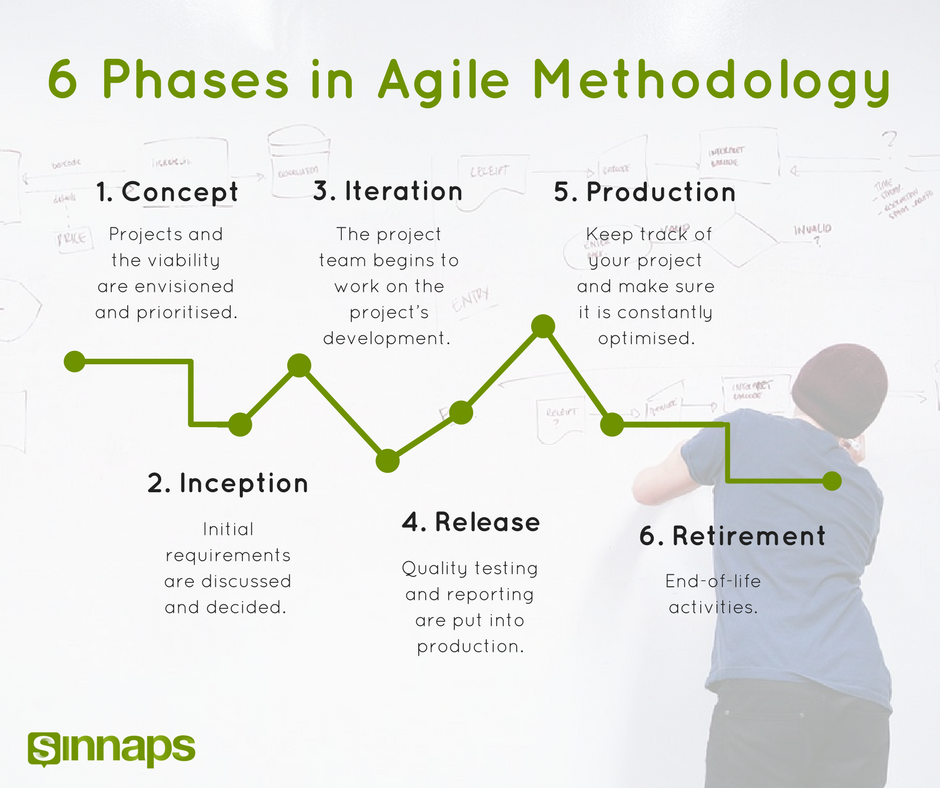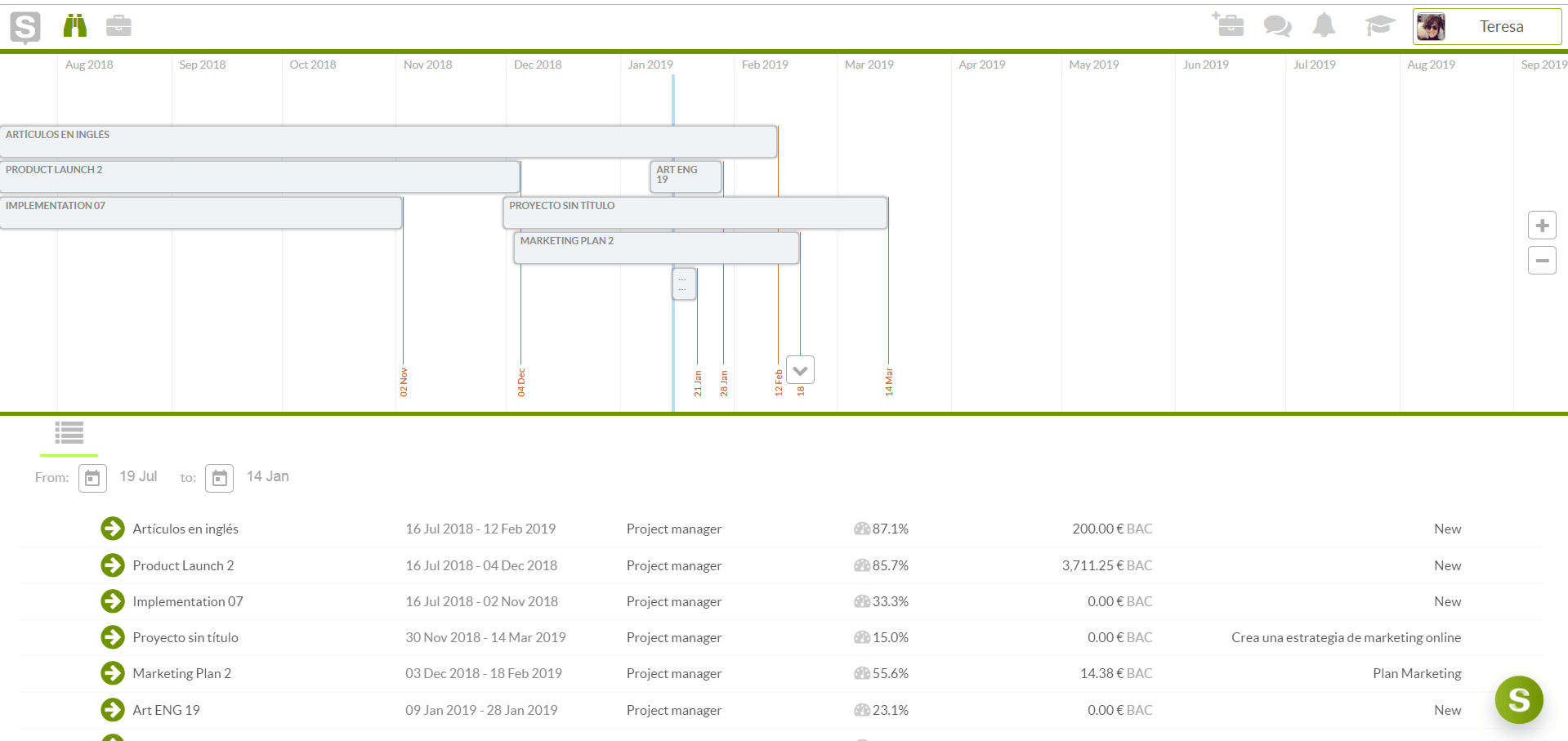Agile portfolio planning /management is one of the many key functions of a project manager practicing the Agile methodology. This much talked about activity consist of a carefully thought-out plan which will guide how business/project managers work on products or projects, the order in which they will be fulfilled, including funding, execution, tracking as well as how much time is to be spent on each activity, and subsequently, its delivery.

But with the Agile idea came an improved means of getting stuff done. This means more flexible, self-organizing teams, with freedom as well as increased sense of responsibility, bringing to the fall, a different approach which not only assures quality and speed, but also ensure delivery of quality products as at when due.

In this article, we will discuss an overview of how to grow your team and your business using Sinnaps online project management software to prepare effective portfolio delivery plans, leveraging its workload planning tools and team planning software to gather data about your business, and through this, prepare better responses for risks, better manage resources, schedules, timelines, etc.

Portfolio Planning
Strategic portfolio planning is a very useful activity in any organization, as the process gives business executives, leaders and managers insight into specific aspects of their business, offer insight into investment opportunities that will ensure long term profitability, while aligning strategies for long-term innovation and product development to company goals and objectives.
Different techniques have been used by business executives for this task, each focussing on different key areas of a business. One of such approach categorizes a firm into two dimensions which includes the market share of a unit of a firm’s business, as well as its growth rate.
The general practice in this instance is to divest profits from a slow-growing business with a low-market-share unit, and to re-invest profits into high-market-share units in fast-growing industries with a greater prospect for growth and profitability. In essence, managers must decide which units of their organisations have a greater prospect for growth, and thus, channel more resources accordingly.
Other strategic planning/portfolio management plan exists, each considering different matrixes in an organization, e.g., the attractive power of a firm’s business within an industry, and executives may rely on the information generated to make further decisions.
IT Portfolio Planning Model
The IT portfolio planning model simply seeks to infuse the concepts of portfolio planning into business/project activities of IT departments, all with a single goal in mind – to evaluate and measure different investment scenarios as well as their profitability prospects.
The concept of IT portfolio management is not much different from Agile portfolio management. However, there exist a few differences which set them apart.
The major difference between the both lies in the fact that, for portfolio management, measurements are carried out using financial yardsticks as basis – stocks, profits, bonds, etc., IT portfolio planning models on the other hand allow the use of other non-financial based indices for preparing a balanced approach towards deciding what to invest in, as well as what to divest from.
Online Project Management Report
See Sinnaps annual Project Management study in PDF
Results from the survey conducted with over 500 sector professionals around the world

Product Portfolio Planning
Let us consider some of the fundamental steps in product portfolio planning and how you can consolidate your efforts to develop effective strategies to link all the steps necessary to execute effective product management across multiple products with clear visibility to analyse decisions and implement solutions with clarity and objectivity.
- Identify business vision and goals: The goal as well as vision of a company is a pointer towards what they want to achieve. When you know this, then you can develop plans based on success metrices that generally fall in line with the company’s direction
- Prioritize key initiatives: Most organisations often have more than one initiative, all which support the company’s goals and objectives and therefore would require some work and effort to optimize. However, among these ideas, there will be those that will have a greater impact on the organization than the others. Thus, it is necessary to identify these initiatives and rank them accordingly. In this regard, it is best to work with an agile software which clearly displays your critical path, enabling you identify tasks, their predecessors and generally prioritize better.
- Tailor work efforts in line with strategic initiatives: Having defined each initiative, the next logical step would be to create product releases which fulfil the ideas as portrayed by the strategic initiatives
- Create visual templates to visualise your plans: This gives you the ability to see at a glance, all the relevant information about the product line, including tasks, milestones, and more. There are loads of portfolio capacity planning tools for portfolio management resource planning as well as other planning scheme online that offer different approaches to portfolio project planning
- Use project planning software to prepare customised reports: Project reports are a great way to stay on top of project schedule, identify and mitigate risks as well as track progress and follow other project KPI.
Sinnaps provides managers with a means to better manage their product portfolios, enabling them create visualised product portfolio plans in addition to sharing the same across teams in the organization.
Also, on the Sinnaps platform, you will create portfolio planning examples like this:
Agile Portfolio Planning

Conclusion
Although different people have different perception of project portfolio planning, but in reality, however, the concept is totally possible, and not only that – it is equally easily incorporated in project endeavours and turns out to be very effective.
Before the idea of Agile portfolio planning came along, project planning activities were done using the traditional project management methods which were not without their own shortcomings. Thus, portfolio planning which entails managing and executing a company’s strategy became a rather ambiguous and difficult task, with almost all the time spent budgeting, tracking finances and writing loads of reports that eventually ends up not being read by anyone. The project portfolio management implementation plan is your best bet out of this dilemma.

